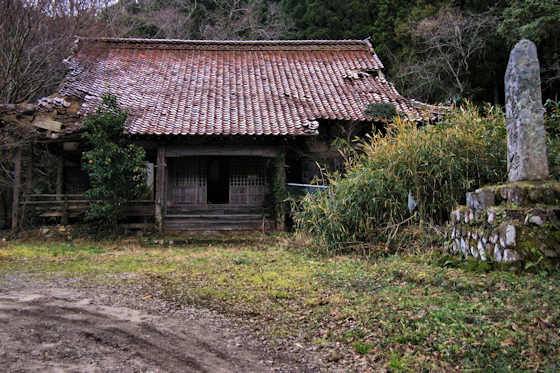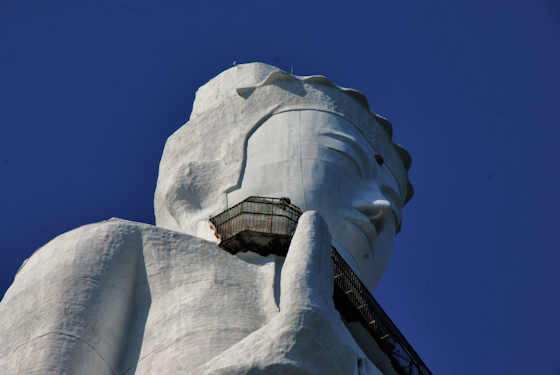Showing posts with label haikyo. Show all posts
Showing posts with label haikyo. Show all posts
Wednesday, February 7, 2024
The Climb to Senganji Temple
Friday, November 18, 2022
Disappeared Japan Rural Temple Haikyo
Disappeared Japan Rural Temple Haikyo
Thursday, November 3, 2022
Disappeared Japan Awaji World Peace Kannon
Awaji World Peace Kannon
Built by a local businessman on Awaji Island, he also built a temple with a ten-storied pagoda at the site. Like many of these monumental statues, there is a viewing deck near the top where members of the public could climb up and enjoy the view.
I have visited several of the other giant Kannon statues in Japan, but the only one I have posted about on this blog is the one near Kurume in Kyushu. It was also built in 1982 and is only 61 meters tall, but is a more professional statue.
Friday, October 4, 2019
Rural Love Hotels
After spending the night near Kirishima Jingu I headed south on my 28th day along the Kyushu Pilgrimage. Pretty much all downhill, my favorite kind of walk, late morning I passed through an area with quite a lot of small love hotels clustered together.
The top photo is a former love hotel that now advertises itself as a lodge. You can tell it's not a love hotel because there are no curtains to hide the vehicle and its number plate, a standard feature that helps protect guests identity. The vast majority of these love hotels are of the cabin / chalet type.
Some of them, like the one pictured above, have been abandoned.
All the cabins were unlocked so I peeked inside a few..... fairly rudimentary and completely lacking in the luxury and exoticism associated with urban love hotels//// though this room did have the mirrors.
A few of them looked a little less run-down with a fresh lick of paint.....
Labels:
haikyo,
kagoshima,
kyushu108,
love hotel
Friday, January 20, 2012
Poison Gas Factory haikyo
I wrote a guide to Okunoshima which can be found here
Labels:
haikyo,
hiroshima,
okunoshima
Sunday, November 21, 2010
School haikyo
Coming into Kawahira I stopped in to explore the old abandoned school
There are hundreds and hundreds of abandoned schools in the countryside of Japan. As the population has fled to the cities student numbers decrease until a community can no longer sustain a school.
Many of them get used as community centers.
This one had some machine tools and so was used for something, and also used for storage of agricultural equipment, straw, etc.
There were many holes in the roof and consequently the floor was in bad condition so I didnt try to explore upstairs.
A few more years and this building will collapse in on itself. Maybe a few years later it will be bulldozed. A few years after that they will maybe try and get it listed as a World Heritage Site.
Wednesday, September 29, 2010
Love Hotel Haikyo
Halfway up the side of a mountain, miles from anywhere, literally clinging to the side of the mountain. we came upon an a small abandoned Love hotel.
Literally built into a crevice, a stream passed underneath the building.
Each of the 4 rooms were decorated with different themes, though the building had been stripped and vandalized so it was not clear exactly what the themes were....
This one seemed to have an underwater theme.
Not sure how long this place stayed in business. In this part of the country the love hotels are built between towns, not in towns, so this one would have serviced customers from Matsue and Yonago.
Each of the 4 rooms had floor to ceiling windows with fantastic views over Nakaumi (the Inner Sea) and Daisen, but Love Hotel customers are not usually concerned with the view :)
Labels:
haikyo,
Izumo,
love hotel
Saturday, July 24, 2010
Shrine haikyo
I first came across this abandoned shrine on a walk around Nagahama about 7 years ago. 25 year old maps still showed a shrine here, so it must ahve been abandoned in the intervening years.
The torii had been dismantled, but 2 fine examples of local ceramic Komainu still remained on guard.
In the shrine building itself little remained but the tatami.
The only religious objects remaining were a couple of gohei. The shintai, the object in the honden into which the kami descends, will have been transferred to a nearby shrine. This in essence de-consecrates the site.
Ive been unable to find out the name of the shrine or why it was abandoned. Unfortunately I dont know any priests in the Hamada area.
The other building at the site was filled with all kinds of junk
Subscribe to:
Posts (Atom)
















































